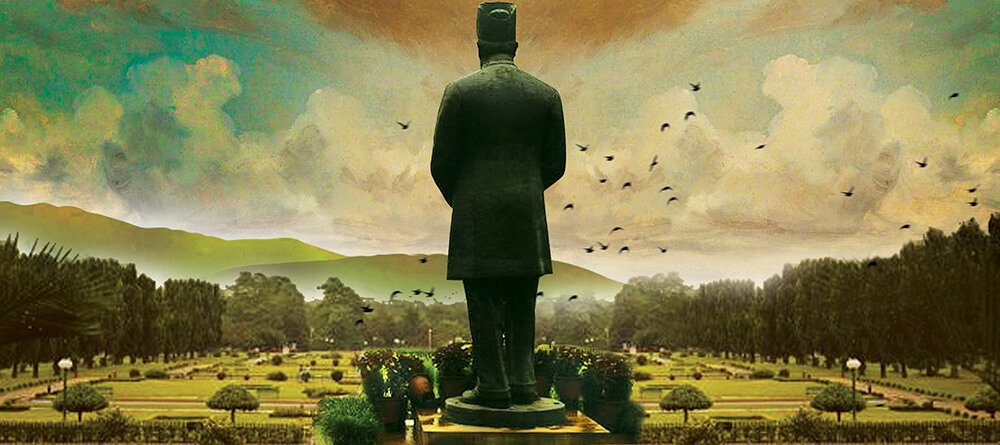When we looked at the Forbes list of top 25 cities to live in, we found it consist almost entirely of European cities - most of these are affluent and, established centuries ago, giving them a long head start in getting it right. However, there was one that caught our eye - Singapore. Coming in at No. 25, Singapore is considered the best city in Asia, followed by the Japanese cities of Tokyo and Kobe. All of these cities score high on all the usual factors, but what makes them stand out, is how they are governed. Each is run centrally, with a clear vision towards the future.
When we evaluated Indian cities on these parameters, there were two that stood out in our minds - Chandigarh and Jamshedpur. Both started out as planned cities, both boast of beautiful roads, both focus on green areas, both look and feel clean. However, where Jamshedpur is miles ahead of the competition is in its modern outlook to city management along with its future readiness.
In 1902, Jamsetji Nusservanji Tata sent a letter to his son, outlining his vision for a City of Steel. He wanted it to be a city that is well planned, green, forward-thinking and inclusive. Jamshedpur stands as a living testament to that vision. Or might we say, has developed beyond that vision as well!
With the highest green cover in industrial cities in India (37%), the city is also the only one in the country where one can directly drink tap water! It has power available 99.9% of the time and uses LED streetlights (18,000 of them) to bring down usage. All waste is collected on time, and it is segregated into organic (kitchen and garden waste), dry waste (paper, plastic, electronics) and reject waste (sanitary waste, medical waste). Organic waste goes into the making of compost and biogas, and plastic waste is used to build roads. The air quality at waste processing plants and landfills in Jamshedpur is monitored... and often better than what we breathe in metros.
These facts make Jamshedpur impressive. But what makes it unique, is the way the city is managed. Jamshedpur Utilities and Services Company Ltd (JUSCO), a wholly owned subsidiary of Tata Steel, manages the city’s water, power, waste management, civil maintenance, road construction, and runs the city like an organisation. In a first for India, Jamshedpur is the only city to leverage technology that networks all its systems, which gives it the ability to not only get ahead of problems but also find unique ways of improving output and levels of service.
For starters, let’s look at water. Problems begin with getting the water safely to the consumers without wastage. The world’s benchmark is Singapore with 5.8% of non-revenue water (water wasted en route to users). Jamshedpur is at 6.6%! They’re able to do this through a centrally controlled system that monitors and predicts damage to underground pipes. They combine this with detailed information on the geography of each area, to predict problems before they occur, allowing them to prevent mishaps. Long Range Wide Area Network (LoRaWAN) connectivity allows for monitoring devices attached to pipelines, water towers, even manholes to feed intelligence to the day-to-day operations.
This is even more apparent in the way Jamshedpur manages sewage water, with it being the first city in India to have Zero Liquid Discharge. In simpler terms, no liquid waste goes out of Jamshedpur into water bodies. That isn’t an easy accomplishment for any urban centre, let alone an industrial city. Household sewage is treated at the sewage treatment plant and reused for gardening, and industrial purposes. There are specialised treatment plants for each industry, ensuring that the water is 100% effluent free.
The city has smart dustbins that notify authorities when they’re 75% full, and a GPS enabled fleet that plans pickup routes to maximise effectiveness and minimise fuel consumption. With intelligence on their power distribution, Jamshedpur can rely on the power being there 99.9% of the time!
Working as a single unit, Jamshedpur benefits from the harmonious combination of all of its services - power, water, waste management, road maintenance, & civil maintenance, to create one fully functioning well-oiled machine. This is where projects that span different areas can feed into one another - for instance, roads being made using plastic waste, or the use of construction and demolition waste for landscaping.
It also makes for great customer service - a citizen can raise a complaint about his utility bill, the condition of the road leading to his house, and the garbage pickup timing all in one place. And now with a Zimmedaar Steel City app launch, the communication becomes two-way. They’re already leveraging it for community projects and public campaigns. Today, a family in the city can check the app for the dates of their favourite activities during the Jamshedpur Winter Fest, RSVP for their participation, AND book a smart parking space at the venue before they leave home!
If that sounds a little like science fiction, it’s only because this is a city that has had its eye on the future for 100 years! 2019 is the Centennial year for Jamshedpur. Yes, it had the right start by being a planned city from the get-go. However, there are lessons here that all our cities can employ. With all the experience and expertise that lies in Digital India, is it really so farfetched to think that one day soon, we could all live in smart cities and a better tomorrow?
 Corporate
Corporate
 Sustainability
Sustainability
 Products & Solutions
Products & Solutions
 Investors
Investors
 Media
Media
 Careers
Careers
 Contact Us
Contact Us




